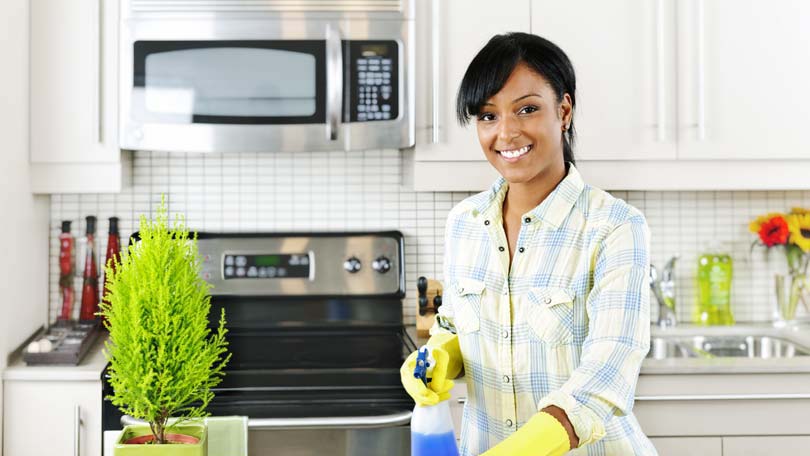
It seems that if an appliance was stainless, it wouldn’t ever need to be cleaned! But the truth is it just has to be cleaned differently than other appliances. So if you’re ready to take on grime and all its friends, here’s a little background on what makes stainless appliances so unique and how you can handle them specifically.
First off, what is a stainless steel appliance? Despite its misleading title, stainless appliances – basically, objects made of stainless steel – are some of the most difficult to keep clean. Something made of stainless steel has a lot more chromium (at least 10 percent more) than its peers, and thus won’t rust or fall prey to various chemicals. While these items are not as vulnerable to rusting, staining, and corroding, however, they have other problems unique to themselves. They’re long lasting but can be a challenge to keep up with.
So before you get to scrubbing down your silverware or cutlery, better get in the know about how to clean stainless steel properly. Especially since more and more folks these days are investing in stainless steel ovens, dishwashers, refrigerators, and commonly barbecue grills – the question of how to clean stainless appliances is constantly popping up.
Whether you’re just curious about how to maintain your appliances or you want to remove frustrating smears and fingerprints (which commonly plague stainless steel), grease, buildup, or even get rid of plain old stains (don’t take the word “stainless” too literally!), there is an answer for you here.
Steps for Cleaning Stainless Appliances
First off, it’s important to routinely clean stainless steel, as the protective layer that so beautifully prevents corrosion is hindered if there is dirt or food buildup blocking oxygen from interacting with the steel. In fact, the more you clean stainless steel, the better. You can actually help improve how chemically resistant your appliance is by wiping it down frequently! This is not the case for other appliances, made of wood or plastic, etc. Those appliances might actually wear and tear if they are cleaned too often.
Furthermore, in order to find the best method of cleaning for your appliance, you have to answer two major questions: “What is the finish of the steel?” and “What kind of grime am I dealing with?” Appliances with epoxy paint should be treated differently than those with a simple perforated design. (There are more than a dozen stainless steel finishes!) As well, dirt should be handled differently than grease, etc.
But, for the most part, make sure you have some vinegar on hand. Instead of buying expensive cleaning products like steel wool and steel brushes, go with some vinegar and scouring powder (which can be bought or made at home). Brushes can actually lead to rusting, whereas vinegar is harmless. After you take to the steel with some vinegar, then rinse it well with warm water. Water will often leave ugly spots on the steel however. If this is the case, just make sure to immediately and thoroughly dry the stainless steel surface with a towel or two.
Probably the most difficult things to ward off for stainless steel appliances are surprisingly, stains, and also, fingerprints! They cause more of an aesthetic problem than anything. Use a glass cleaner to tackle these problems. Also, sodium carbonate will often do the trick. Again, always follow your cleaning by rinsing the steel with some warm water.
For grease and other oils, you’ll probably want to get some cleaners designed specifically for them. You just have to check that those products are okay for stainless steel before you use them.
As a rule, try to simply keep up with your stainless steel by frequently cleaning it with mere water. Water will take care of buildup in most cases. However, sometimes you have to use solvents to keep your stainless steel shiny and spotless. Just avoid using solvents that have chlorine as an ingredient. Detergents containing chloride are the last thing on earth you should ever put on a stainless steel appliance! In general, however, you have to be careful with powerful solvents. If you’re smoking while cleaning or confound to a small place, don’t use them.
It’s probably a little disillusioning that stainless steel really isn’t quite “stainless,” and can be difficult to maintain in its own right. However, the advantages of stainless steel trump the disadvantages and as long as you clean your steel appliances regularly, you and your barbecue or oven or flatware should be in good shape and last a long, long time.
